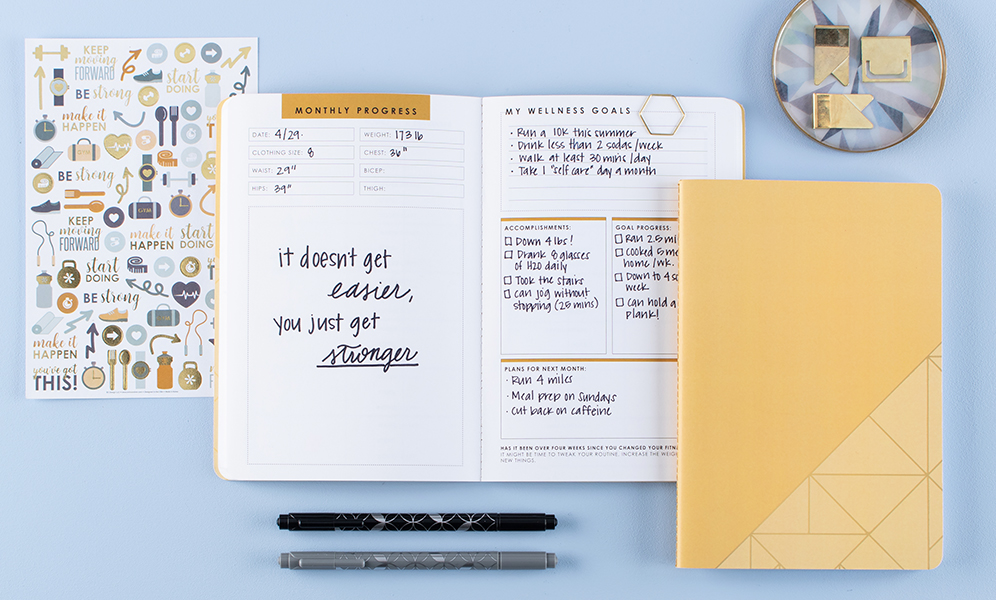The beginning of a new year is always bursting with aspirational goal setting, but it’s important to slow down and reflect on what you learned the previous year and how it prepared you for the resolutions you set for the new year.
Setting resolutions is about more than making wishful promises as the clock strikes midnight on New Year’s Eve. Resolutions are wonderful reminders that the new year is a new start to planning (and living!) your best life.
After 50 new years, and countless resolutions, here are some tried-and-true goal-setting guidelines I live by.
1. Write your goals by hand in a planner.
Not only does writing in a paper planner offer relief from digital fatigue, but it also helps you slow down and be more mindful and intentional about goal setting. Plus, you’re 42% more likely to achieve your goals just by writing them down. I encourage you to explore the benefits of planning and discover how it can benefit you personally.
2. Keep your resolutions focused on one or two main goals.
I’ve learned the hard way that getting too excited about New Year’s resolutions and making a long, overly ambitious list is a sure way to discourage yourself.
Instead of writing an unattainable wishlist, try focusing on one or two main goals. While it may seem difficult to do when you have so many things you want to accomplish in the new year, try writing a “rambling resolutions list” on a scratch piece of paper, then narrow them down by ranking them by priority (and attainability).
After writing down your prioritized goals in your planner, organize and actualize them with realistic action steps.
3. Determine goal setting action steps and benchmarks.
Defining and writing down specific ways you can reach your goals makes it way easier to track your progress, plus it increases your chances of success! If you’re focusing on budgeting goals, make them about improving your overall financial health; then set achievable and measurable benchmarks to make it happen. For example, if your goal is to save up for a new car, write down action steps and benchmarks that lead you directly to that goal.
Be careful not to set yourself up for failure by setting benchmarks that are unmeasurable or unattainable. You can always adjust your benchmarks to better fit your goals once you explore what’s realistic and what’s not.
4. When goal setting, always prepare for obstacles.
We all know how easy it is to feel overwhelmed when obstacles stand between us and our goals. That’s why I like to plan ahead as much as possible in anticipation of bumps in the road. While it’s impossible to avoid all obstacles, even with planning, being prepared for them reduces the stress they can cause and helps you scale those hurdles faster.
In addition to planning ahead, I’ve found that simple self-care habits can help prepare you for times when things don’t go exactly as planned. I like to set aside time to meditate, socialize, and reset my mindset. Gratitude journaling or simply getting more sleep help keep me centered, mindful and focused on the goal, not the obstacle!
5. Be your own cheerleader.
Setting goals is one thing, but sticking to them is another! This is where self-motivation comes in. In my experience, the ability to manage my own motivation has made the difference between reaching my New Year’s resolutions or repeating them, year after year.
Keeping yourself motivated to see your goals through can take any form you like, from motivational conferences to music, meditation, positive self-talk and everything in between. I love combining inspirational quotes and colors in my planning to keep me focused on my goals while having a bit of fun with the process. If you’re not having fun, it’s time to adjust your process (not your goals).
Here’s to sticking to your New Year’s resolutions and making 2020 your most successful year yet!


